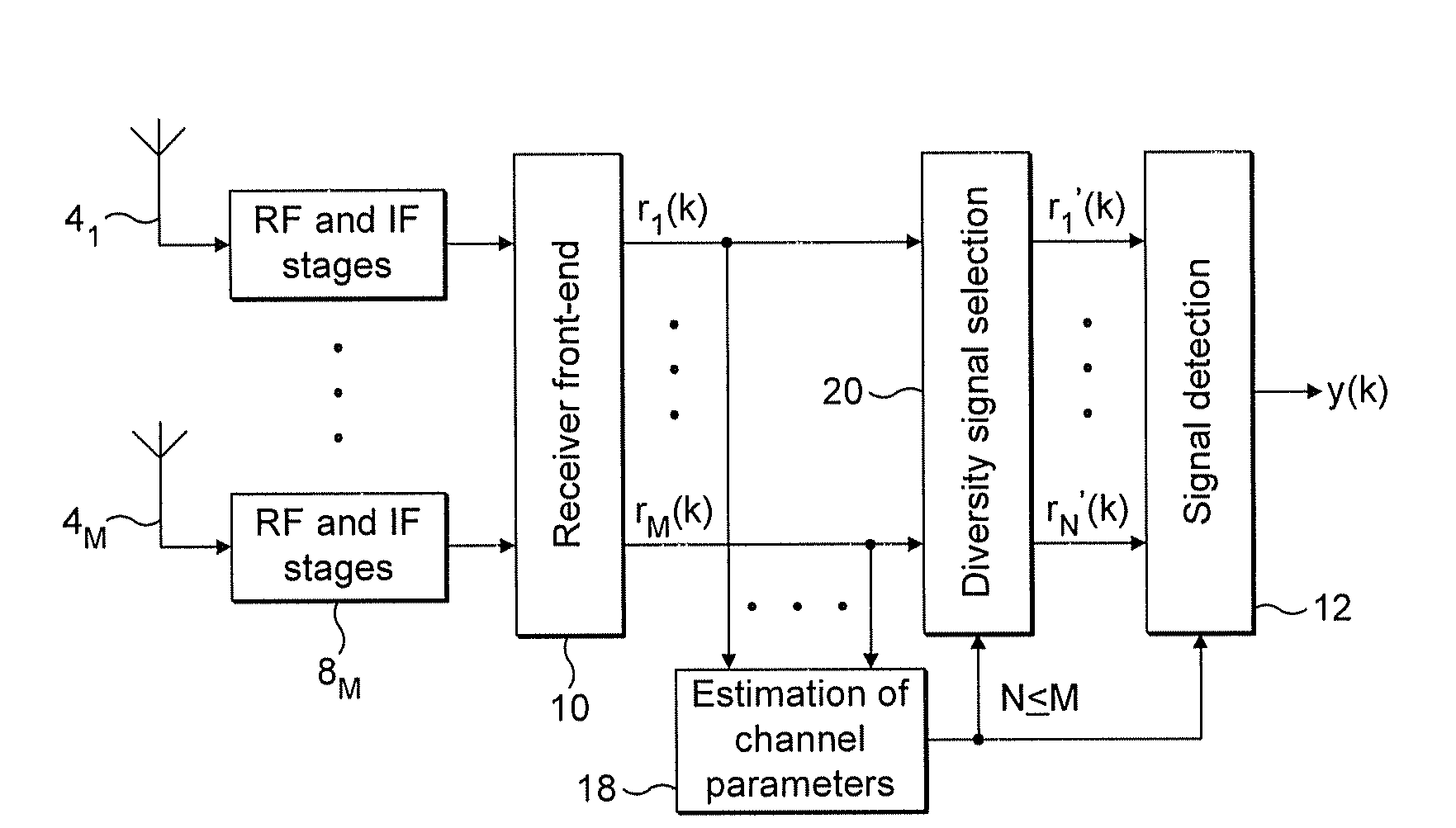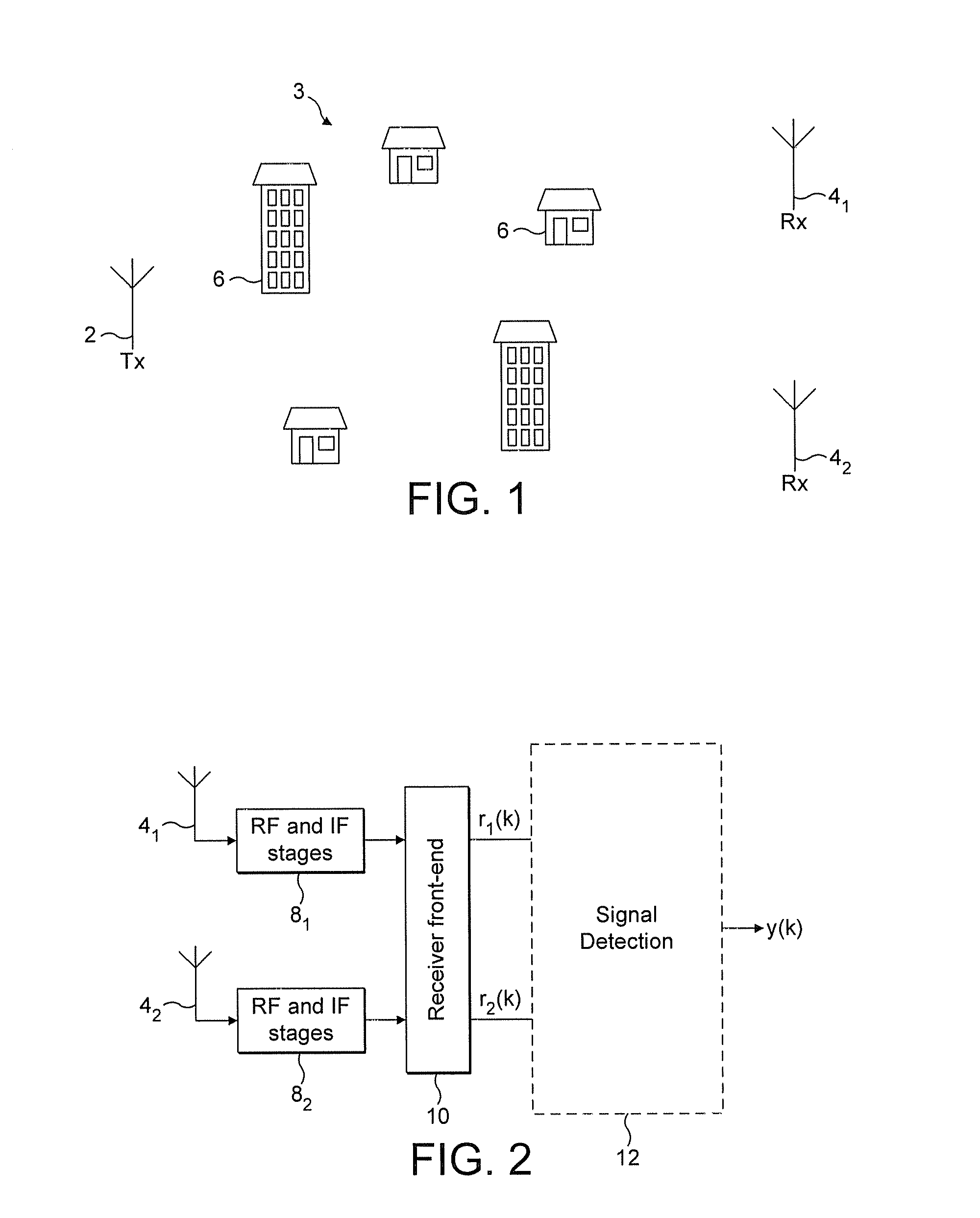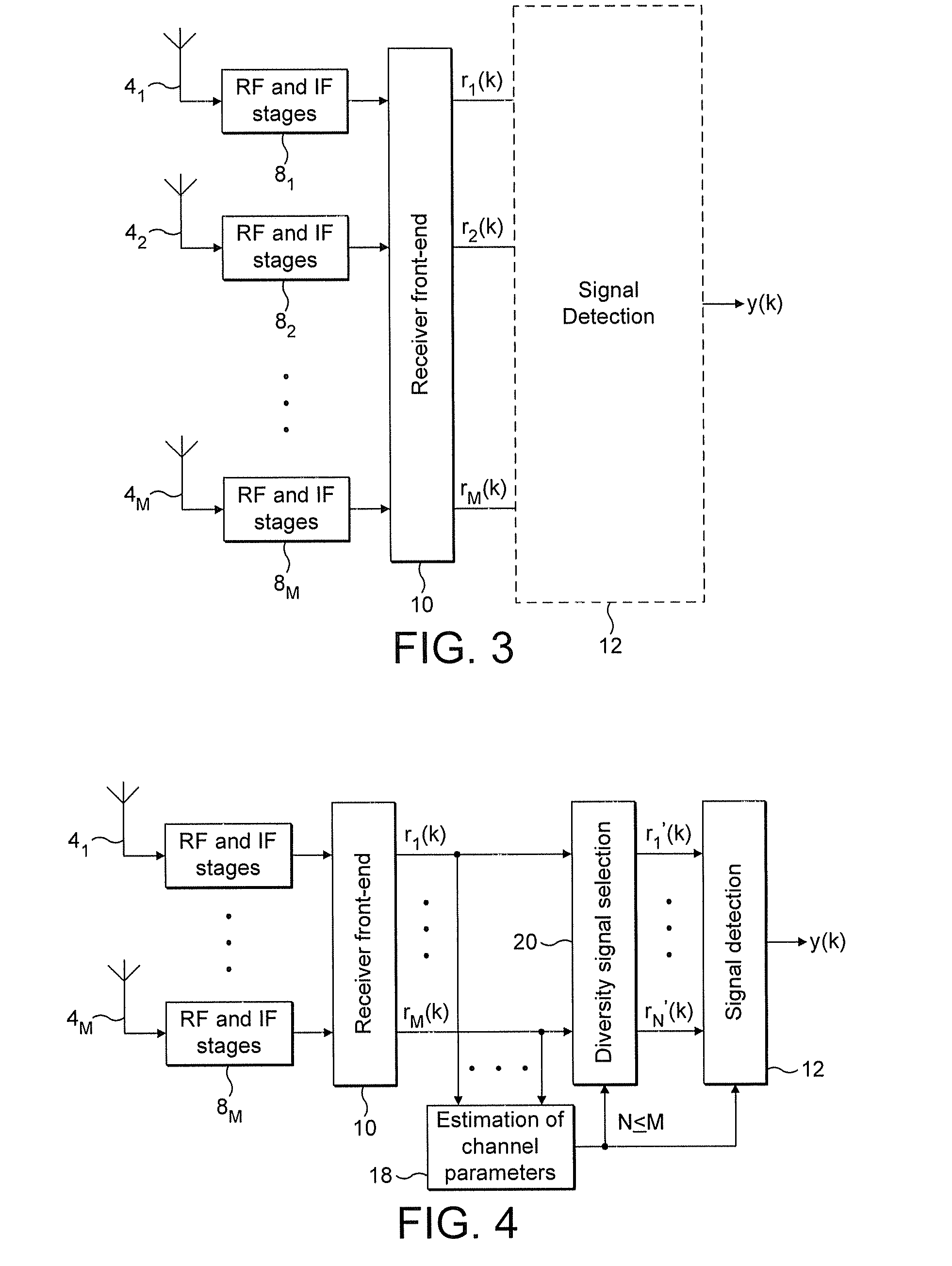Wireless Receiver with Receive Diversity
a wireless receiver and receiver technology, applied in the field of wireless receivers with receive diversity, can solve the problems of increasing the “dimensionality” of the receiver, incurring an increased computational cost, and noticeable fluctuations in signal quality, and achieve low signal-to-disturbance ratios, increase correlation, and improve the effect of signal-to-disturbance ratios
- Summary
- Abstract
- Description
- Claims
- Application Information
AI Technical Summary
Benefits of technology
Problems solved by technology
Method used
Image
Examples
Embodiment Construction
[0052]FIG. 2 is a schematic block diagram of an example wireless receiver for achieving a two-dimensional receive diversity scheme. The receiver comprises two spatially separated antennas 41 and 42. The antennas are typically separated by ¼ to 1 wavelength. For example, at 2 GHz the wavelength is about 5 cm, so a separation within this range is achievable within a mobile phone or such like. Below about ¼ wavelength, the effect of the diversity tends to become negligible because the channels become more correlated and experience similar disturbance (noise and / or interference).
[0053]The receiver also comprises a first block of radio frequency (RF) and intermediate frequency (IF) stages 81, a second block of RF and IF stages 82, and a receiver front-end 10. The first antenna 41 is coupled to an input of the first RF / IF stages block 81, and the second antenna 42 is coupled to an input of the second RF / IF stages block 82. The output of each RF / IF stages block 81 and 82 is coupled to an i...
PUM
 Login to View More
Login to View More Abstract
Description
Claims
Application Information
 Login to View More
Login to View More - R&D
- Intellectual Property
- Life Sciences
- Materials
- Tech Scout
- Unparalleled Data Quality
- Higher Quality Content
- 60% Fewer Hallucinations
Browse by: Latest US Patents, China's latest patents, Technical Efficacy Thesaurus, Application Domain, Technology Topic, Popular Technical Reports.
© 2025 PatSnap. All rights reserved.Legal|Privacy policy|Modern Slavery Act Transparency Statement|Sitemap|About US| Contact US: help@patsnap.com



